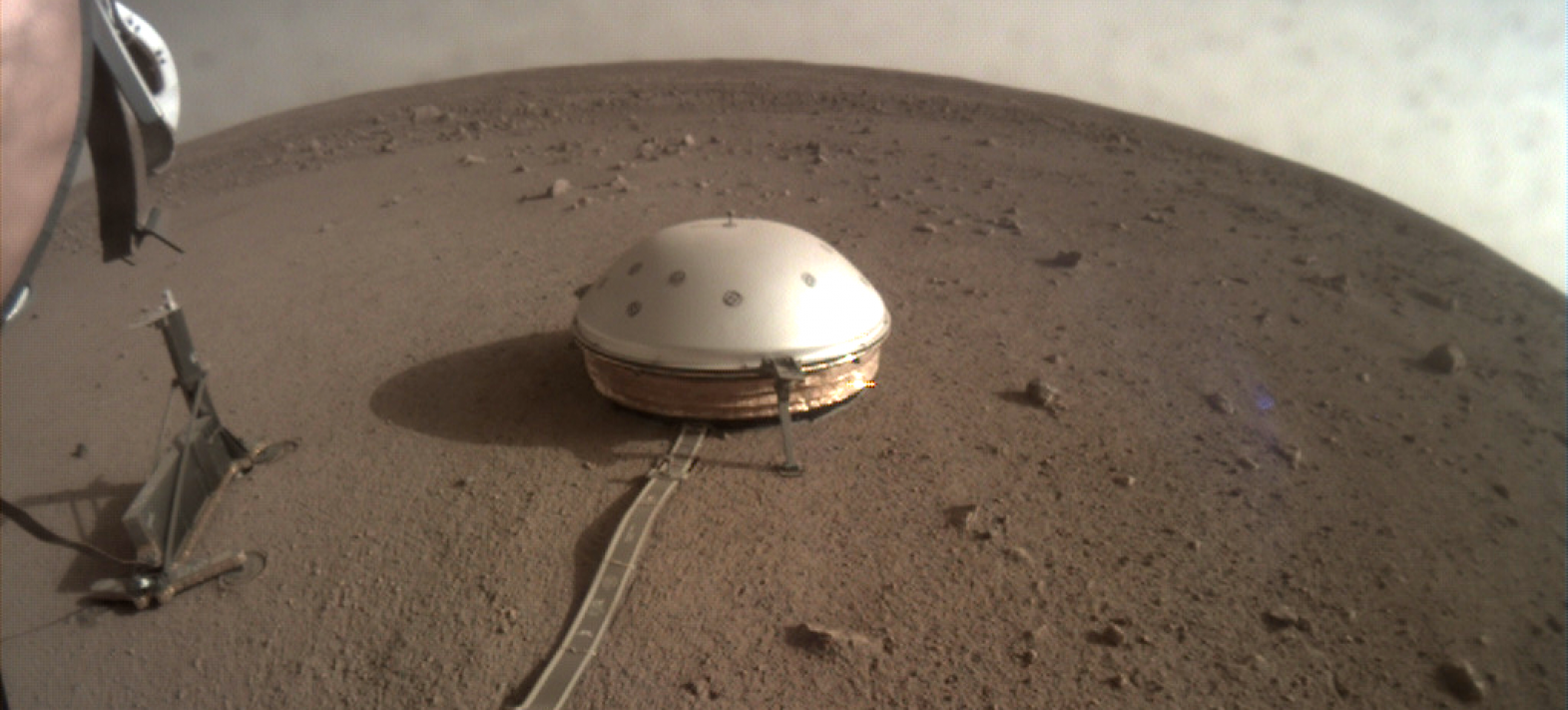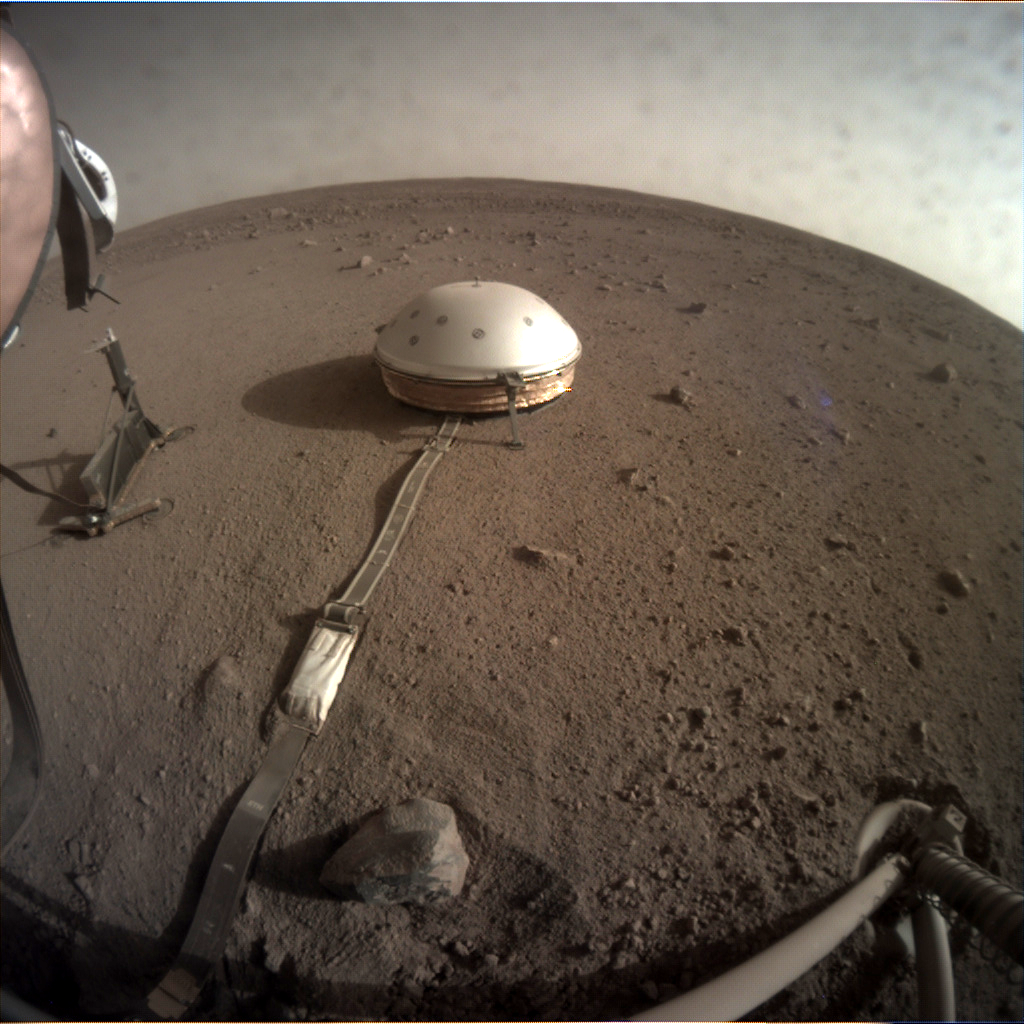Three other signals that could also be of seismic origin were detected on March 14th (“Sol 105”), April 10th (“Sol 132”) and April 11th (“Sol 133”). The interpretation of these signals is still ambiguous for the InSight team, but for at least two of them, they do not appear to be due to the effect of wind or other sources of parasitic noise. In practice, these signals are much weaker than that of ‘Sol 128’, and have only been detected by the ultra-sensitive VBB sensors on the SEIS instrument. The team is working hard to pinpoint the origin of these new signals.
The InSight mission is piloted by JPL. Called the Seismic Experiment for Interior Structure (SEIS), the seismometer installed on the space lander was delivered by CNES, which acted as prime contractor. Philippe Lognonné, Professor at the University of Paris Diderot and geophysicist at the IPGP, is scientific director of SEIS in association with teams from the CNRS.
“We’ve been waiting for our first marsquake for months,” explains Philippe Lognonné. “It’s great to finally have a sign that seismic activity still exists on Mars. We look forward to reporting detailed results as soon as we have studied and modelled our data more closely.”
Mars has no tectonic plates, which are responsible for most of the quakes on Earth. But the two planets and the Moon share another type of quake, caused by faults or fractures in their crust. When the crust undergoes excessive stress due to weight or slow cooling, it ruptures and releases energy.
Detecting these earthquakes is a real technological feat. On our planet, high-performance seismometers are often placed underground to protect them from temperature variations and bad weather. But the SEIS seismometer cannot be buried on Mars, so several ingenious devices have been put in place to protect it from temperature variations, which are extremely high on Mars, and from other sources of noise. A protective shield built by JPL called the “Wind and Thermal Shield” helps to attenuate environmental noise by protecting SEIS from wind, dust and temperature variations. As a result, the sensitivity of SEIS to date exceeds all the team’s expectations.
CNES is the prime contractor for SEIS, and IPGP (Institut de Physique du Globe de Paris, CNRS, Université de Paris) has scientific responsibility for the project. CNES is funding the French contributions, coordinating the international consortium (*) and has been responsible for the integration, testing and supply of the complete instrument to NASA. IPGP designed the VBB (Very Broad Band) sensors, then tested them before delivery to CNES. Several CNRS laboratories, the LMD (CNRS/ENS Paris/Ecole Polytechnique/Sorbonne University) and the LPG in Nantes (CNRS/Université de Nantes/Université d’Angers) and ISAE-SUPAERO are also involved in analysing data from the InSight mission.
(*) in collaboration with SODERN for the production of the VBBs, JPL, the Swiss Federal Institute of Technology Zurich (ETHZ, Switzerland), the Max Planck Institute for Solar System Research (MPS, Göttingen, Germany), Imperial College London and Oxford University provided the SEIS subsystems and are participating in the scientific exploitation of SEIS.
Ref:










